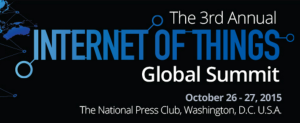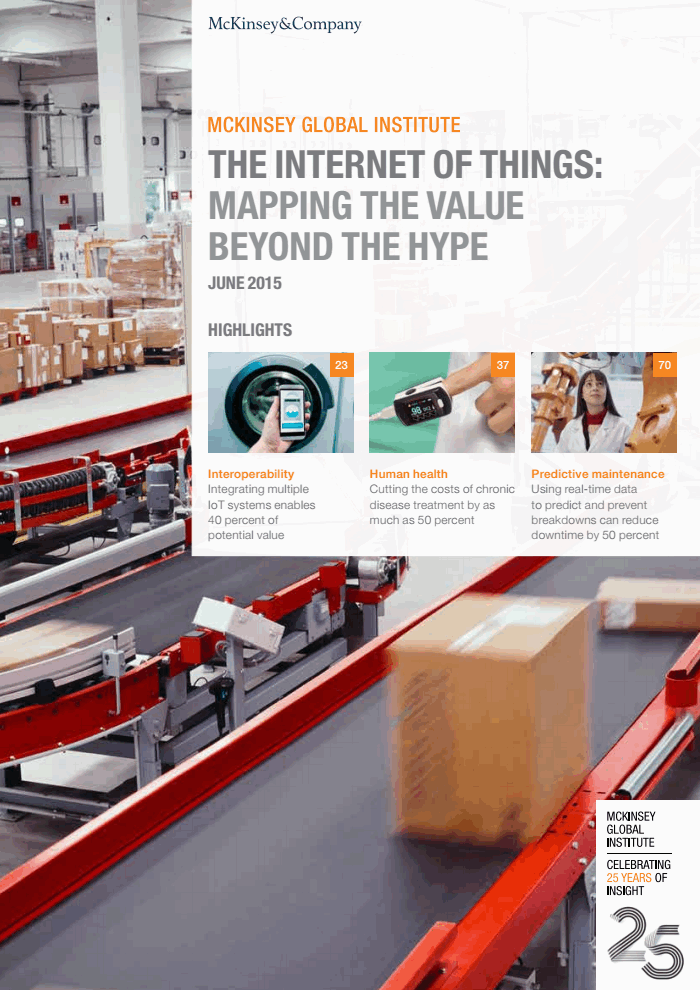One of the truly exciting things about viral digital phenomena is how rapidly they can take hold, outstripping the slow, methodical spread of innovations in the pre-digital era. I suspect we may be on the verge of that happening again, with an unlikely impetus: the crowdsourced global movement to create free citywide IoT data networks.
We’re been there before, with the movement to open real-time public access to city data bases, beginning when CTO (and later US CIO) Vivek Kundra did it in DC in 2008, then sponsored the Apps for Democracy competition to spark creation of open-source apps using the data (bear in mind this was at a time when you had to explain to many people what an “app” was, since they, and smart phones, were so new). From the beginning, Kundra insisted that the apps be open source, so that hackers in other cities could copy and improve on them, as they have — worldwide.
I was doing consulting for him at the time, and remember how incredibly electric the early days of the open data movement were — it inspired my book Data Dynamite, and led to similar efforts in cities worldwide, which in turn set the stage for the “smart city” movement as the IoT emerged.
As detailed in my last post, we’re now launching a crowdsourced campaign to make Boston the first US city, and second worldwide (following Amsterdam) to have a free citywide IoT data network — and plan to up the ante by setting of goal to cover the neighborhoods too — not just the downtown.
The Things Network guys plan to build on their accomplishments, announcing this week that they will advise similar crowdfunded networks on five continents (including our Boston project). They place a major emphasis on grassroots development, to avoid subscription-based infrastructures that could be controlled from above and which would limit l0w-cost innovations, especially on the neighborhood scale. According to founder Wienke Giezeman:
““If we leave this task up to big telcos, a subscription model will be enforced and we will exclude 99% of the cool use cases. Instead, let’s make it a publicly owned and free network so businesses and use cases will flourish on top of it.”
I’ve been a fan of mesh networks back to my days doing disaster and terrorism because they’re self-organizing and aren’t vulnerable because there isn’t a single point of failure. But it’s as much philosophical as technological, because you don’t have to wait for some massive central authority to install the entire system: it evolves through the decisions of individuals (we’re already finding that in Boston: it turns out that our system will be able to tap a number of LoRaWAN gateways that several companies had already installed for their own uses!) The Amsterdam guys share that perspective. Tech lead Johan Stokking says:
“We make sure the network is always controlled by its users and it cannot break at a single point. This is embedded in our network architecture and in our governance.”
Takes me back to my callow youth in the 6o’s: let a thousand apps bloom! (and, BTW, the great Kevin Kelly made this point in his wonderful Out of Control, back in the mid 90’s, especially with his New Rules for the New Economy (I’m going to take the liberty of posting all the rules here, because they are so important, especially now that we have technology such as LoRaWAN that foster them!):
“1) Embrace the Swarm. As power flows away from the center, the competitive advantage belongs to those who learn how to embrace decentralized points of control.
2) Increasing Returns. As the number of connections between people and things add up, the consequences of those connections multiply out even faster, so that initial successes aren’t self-limiting, but self-feeding.
3) Plentitude, Not Scarcity. As manufacturing techniques perfect the art of making copies plentiful, value is carried by abundance, rather than scarcity, inverting traditional business propositions.
4) Follow the Free. As resource scarcity gives way to abundance, generosity begets wealth. Following the free rehearses the inevitable fall of prices, and takes advantage of the only true scarcity: human attention.
5) Feed the Web First. As networks entangle all commerce, a firm’s primary focus shifts from maximizing the firm’s value to maximizing the network’s value. Unless the net survives, the firm perishes.
6) Let Go at the Top. As innovation accelerates, abandoning the highly successful in order to escape from its eventual obsolescence becomes the most difficult and yet most essential task.
7) From Places to Spaces. As physical proximity (place) is replaced by multiple interactions with anything, anytime, anywhere (space), the opportunities for intermediaries, middlemen, and mid-size niches expand greatly.
8) No Harmony, All Flux. As turbulence and instability become the norm in business, the most effective survival stance is a constant but highly selective disruption that we call innovation.
9) Relationship Tech. As the soft trumps the hard, the most powerful technologies are those that enhance, amplify, extend, augment, distill, recall, expand, and develop soft relationships of all types.
10) Opportunities Before Efficiencies. As fortunes are made by training machines to be ever more efficient, there is yet far greater wealth to be had by unleashing the inefficient discovery and creation of new opportunities.”
If you really want to exploit the IoT’s full potential, you gotta read the whole book.
Equally important, the Obama Administration announced it will boost smart city app development with a new $160 million smart cities initiative:
“Among the initiative’s goals are helping local communities tackle key challenge such as reducing traffic congestion, fighting crime, fostering economic growth, managing the effects of a changing climate, and improving the delivery of city services. As part of the initiative, the National Science Foundation will make more than $35 million in new grants and the National Institute of Standards and Technology will invest more than $10 million to help build a research infrastructure to develop applications and technology that ‘smart cities’ can use.”
The LoRaWan gateways used in the Amsterdam project are already low cost: only 10 of the $1,200 units covered the downtown area. However, The Things Network hopes to crowdsource an even cheaper, $200 version through a Kickstarter campaign. If that happens, even small cities will be able to have their own free citywide IoT data networks, and when that happens, I’m confident the IoT will shift into hyperdrive worldwide!
Are you on board?
Oh yeah, did you say what about the risks of privacy and security violations with such a large and open system? The Amsterdam lads have thought of that as well, reaching out to Deloitte from the get-go to design in security:
“To make this initiative grow exponentially, we have to take cyber security and privacy into account from the start of the development. Therefore, we have partnered with Deloitte, who is not only contributing to the network with a Gateway, but will also be the advisor on the security and privacy of the network.
“’We translate technology developments in the field of Digital, Data and Cyber Security into opportunities and solutions for our clients. We are therefore happy to support the Things Network as Security & Privacy advisor’ Marko van Zwam, Head of Deloitte Cyber Risk Services.”
 In the past, the event was used to launch major IoT regulatory initiatives by the FTC, the only branch of the federal government that seems to really take the IoT seriously, and understand the need to protect personal privacy and security. My other fav component of last year’s summit was Camgian’s introduction of its Egburt, which combines “fog computing,” to analyze IoT data at “the edge,” and low power consumption. Camgian’s Gary Butler will be on the retail panel with me and with Rob van Kranenburg, one of the IoT’s real thought leaders.
In the past, the event was used to launch major IoT regulatory initiatives by the FTC, the only branch of the federal government that seems to really take the IoT seriously, and understand the need to protect personal privacy and security. My other fav component of last year’s summit was Camgian’s introduction of its Egburt, which combines “fog computing,” to analyze IoT data at “the edge,” and low power consumption. Camgian’s Gary Butler will be on the retail panel with me and with Rob van Kranenburg, one of the IoT’s real thought leaders.


